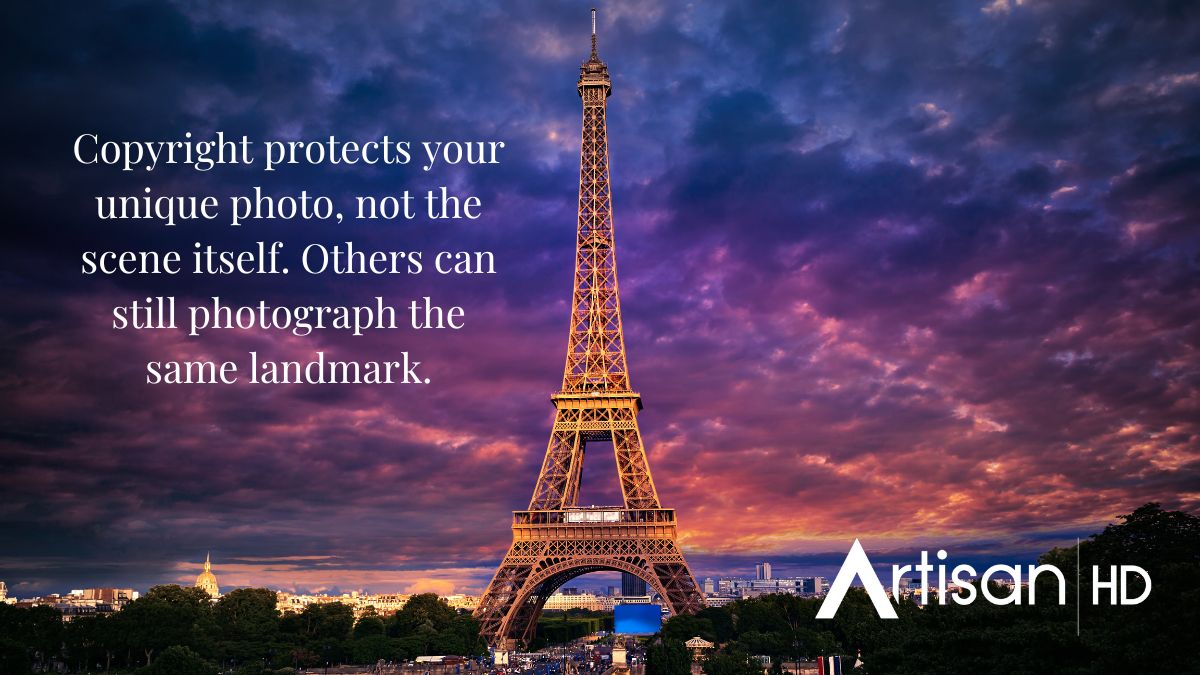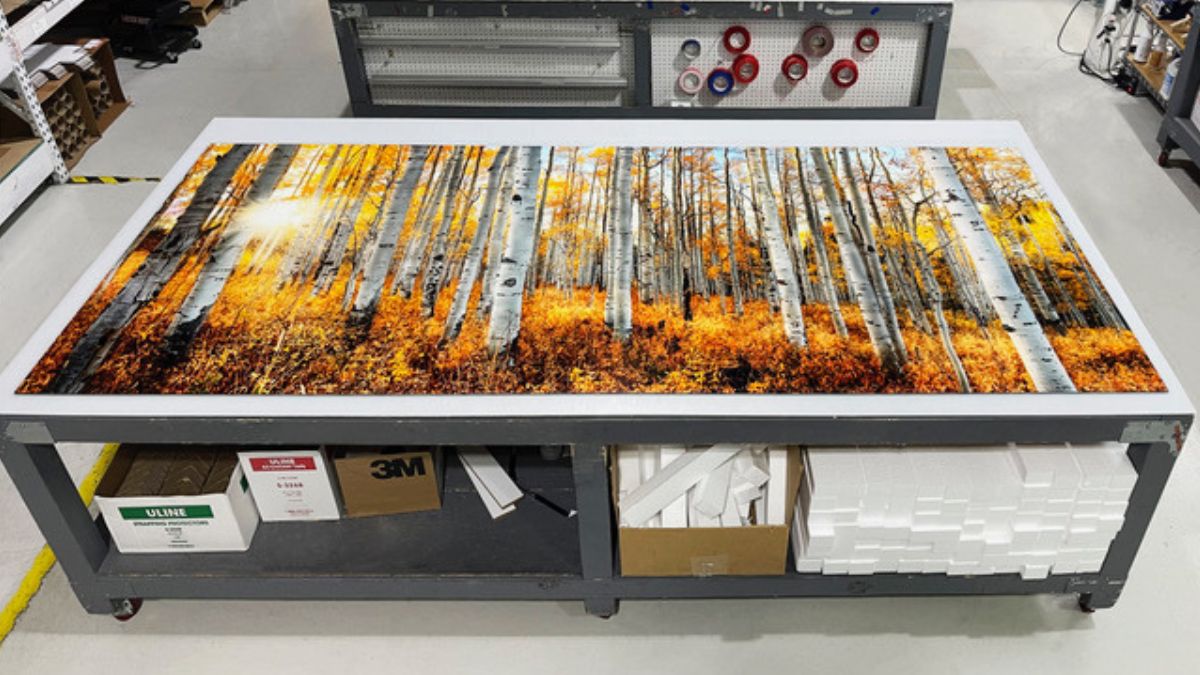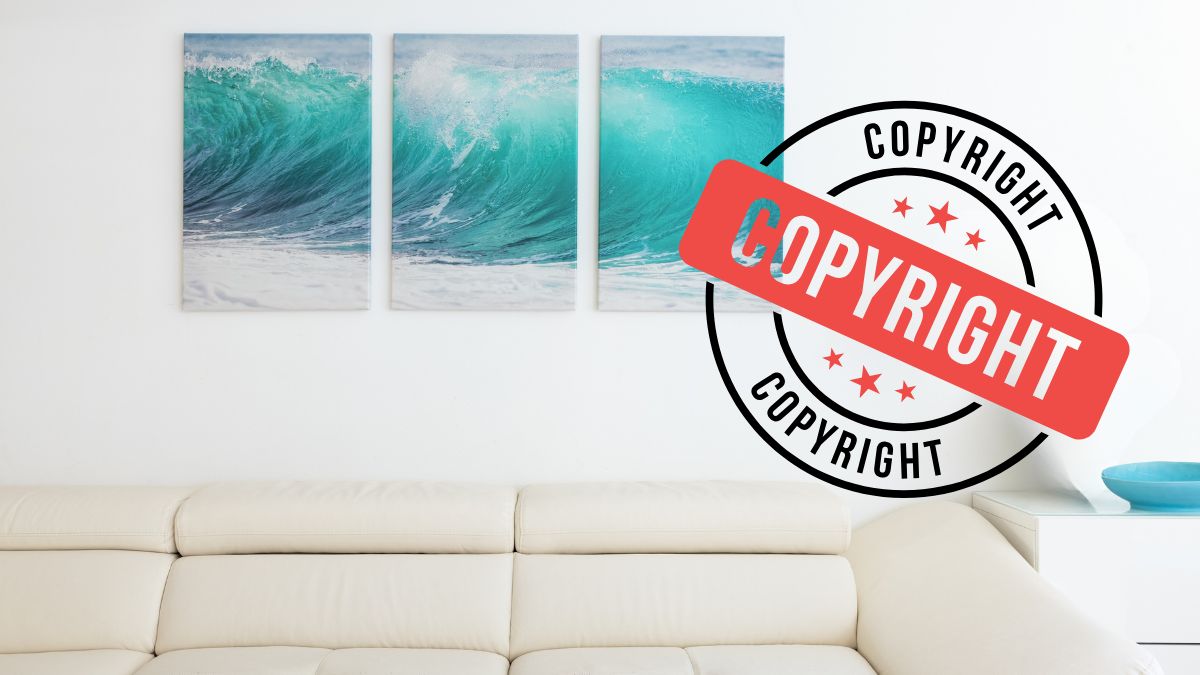Imagine waking up one morning to find your photographs splashed across some of the world’s biggest publications. This happened to photojournalist Daniel Morel. However, he wasn’t happy about this. Instead, he was frustrated—his images of the 2010 Haiti earthquake had been taken and shared without his permission.
Many photographers and digital artists reading this may have faced similar challenges. It can feel hopeless, frustrating, and disheartening when this happens.
As an artist, you want to focus on creativity and self-expression and not be bothered by the mundane details of running an art business. However, if you want to make a living from your artwork and secure ownership of your creations, you need to know how to copyright artwork.
Thanks to copyright laws, Morel won a landmark case against Getty Images and Agence France-Presse (AFP)—securing both his rights and a large financial award.
Creative work is especially vulnerable in today’s digital age. Morel’s images, for instance, were stolen directly from social media.
Copyright shields your art from unauthorized use, giving you exclusive rights to share, display, use, and sell your art however you please.
Read on as we break down the ins and outs of copyright for artists, so your work can get the protection it deserves!
Understanding Copyright
Let’s start with the basics. Copyright is a legal framework that gives you exclusive rights to your original works such as photos, music, digital art, and literature. With copyrights, you get to decide how your art is used, reproduced, displayed, licensed, and distributed.
In most countries, copyright applies to a work of art only if it:
- Is fixed
- Is original
- Expresses an idea

Fixing Artwork
Usually, copyright is automatically granted as soon as an original piece of work is fixed. Now, what does “fixing” mean? In relation to copyright for artists, fixing means creating a permanent, tangible form of the original work so that it can be perceived and reproduced beyond a fleeting moment.
So, if you compose a song in your head, it’s not eligible for copyright, even if performed. However, once you write it down, or record a performance, copyright applies.
In photography, taking a picture with a camera fixes an image. The moment Daniel Morel captured those iconic earthquake images, they were secured in a manner that protected his copyright.
Understanding fixing can be a bit tricky, so head on over to the US Copyright Office website for detailed explanations.
Original Artwork
To be considered original, a work must demonstrate sufficient creativity and be independently created. Originality arises from the creator’s artistic choices, making simple designs like basic symbols or common typography ineligible for copyright.

Artwork that Expresses an Idea
In copyright terms, expression means putting a unique spin on a generic idea. While the concept of witches and wizards at a magic school isn’t copyrighted, the unique characters, storylines, and dialogues found in Harry Potter are.
Photographers, here’s an example for you—photography copyright laws do not apply to the scenery in your photo, but the photograph itself is protected as an expression of that image.
Keep in mind that copyright is automatically granted upon fixing, but it remains unregistered until you apply for registration at your copyright office. Unregistered copyright offers limited protection; registration allows you to sue for attorney fees and statutory damages in infringement cases.
How to Copyright Artwork in 5 Steps
Now that we’ve clarified what copyright is and its importance, let’s shift gears and learn how to copyright your artwork. Here are the steps you need to take:
Step 1: Create and Fix Your Artwork
As mentioned earlier, automatic copyright applies to an original work once it’s created and fixed. So make sure that your photograph or artwork is on a tangible medium—this could be a digital or physical medium.
At this time, you have an unregistered copyright of the artwork which gives you basic legal protection.
Step 2: Sign, Date, and Document the Creative Journey
This is a precautionary step but can be crucial if you only have unregistered copyright. Sharing your work online makes it vulnerable to theft, so proving ownership is key. Recording your creative process or sharing clips on social media can help establish you as the original creator.
Sign, date, and watermark your art and photos immediately—this won’t register the copyright but acts as evidence of ownership and can deter potential theft.
Step 3: Register Your Work at the Copyright Office
If you’ve decided that you want to apply all copyright protections to your work, you need to fill out the appropriate application form (paper or online) and submit it to the copyright office of your country.
You will also need to submit copies, identifying documents, or photographs of your work, depending on the type of artwork.
Step 4: Pay the Registration Fee
Once the registration is complete, you’ll have to pay a fee that usually ranges from $35 to $55 in the US.
Step 5: Receive Confirmation of Copyright Registration
After the application has been submitted, it will be examined. If the application has been accepted, you’ll receive an official certificate of copyright. This not only registers your copyright but also creates a public record of ownership. Don’t forget to store this document carefully.

How Does Copyright Work on Prints?
Most artists sell prints of their work to make their art accessible to a wider audience for a fraction of the cost of the original work.
Prints are considered derivative works and are covered by the copyright of the original artwork, whether the copyright is automatic or registered.
You can take it a step further and provide additional protection for your prints by registering them at the Copyright Office too. Prints need to be registered separately from the original work and all legal benefits of registered copyright will apply to them once the copyright application has been approved.
Elevate and Preserve Your Artwork with ArtisanHD’s Expert Printing Services
In today’s digital landscape, protecting your artwork is essential. With a simple click, anyone can misuse your art, which can not lead to financial loss and a lot of frustration.
Prioritize learning about copyright and follow the steps detailed in this article to secure your rights and safeguard your creations. In a world where creative theft is rampant, copyright knowledge and registration are key to ensuring that artists can print, share, and sell art with confidence.
If you’re an artist looking a fine art printing partner, ArtisanHD is here to support you We offer:
- Highest-quality print materials
- Expert color management
- Diligent quality control
- While label shipping
- Volume discounts
- Pro Artist Perks
Transform your art with ArtisanHD’s expert printing services. Connect with our experts to ensure your creations are beautifully preserved and showcased, so you can focus on what you do best—creating.
Visit our artist ambassadors page to learn why so many professional artists choose ArtisanHD.










Leave A Comment